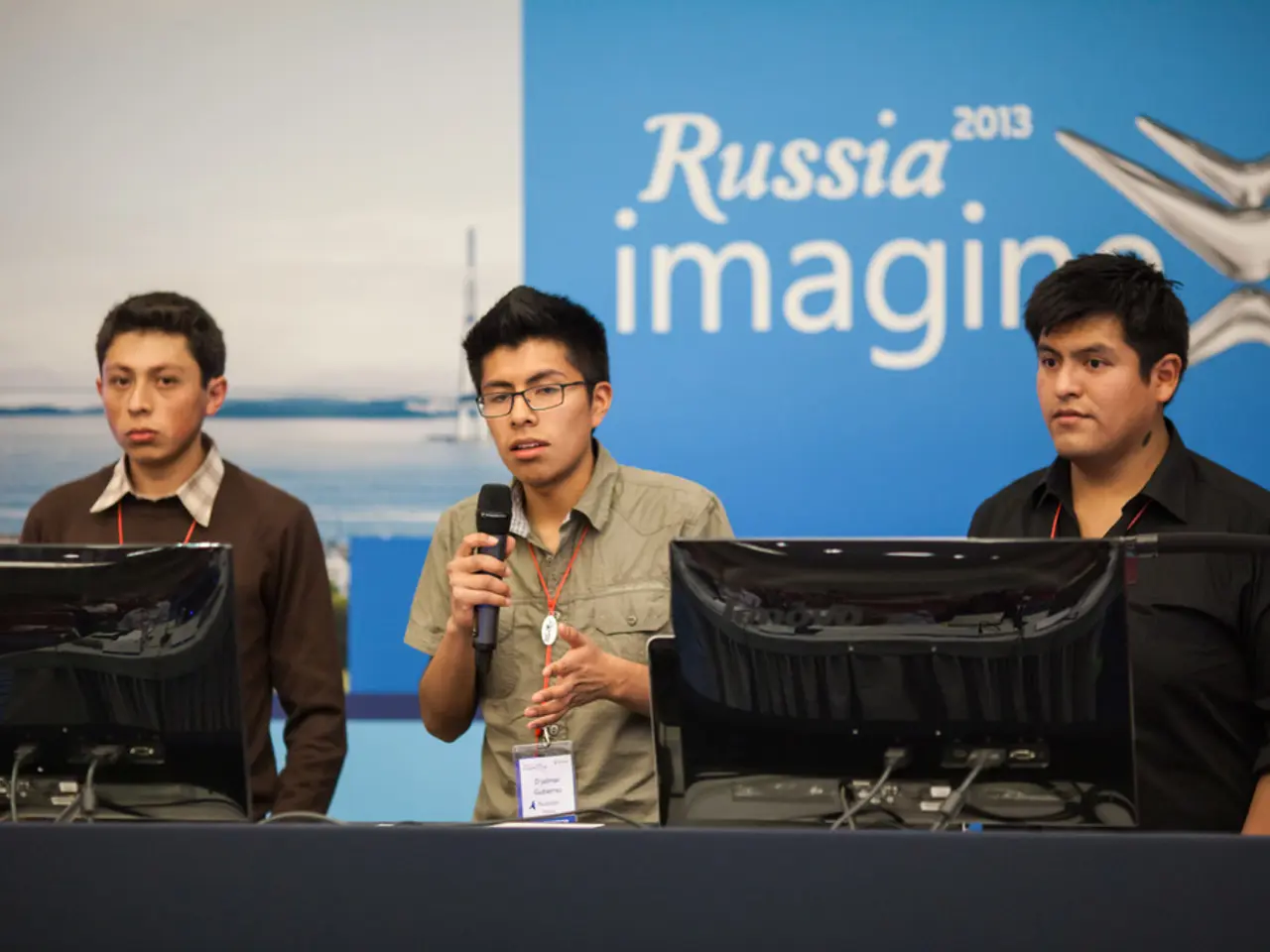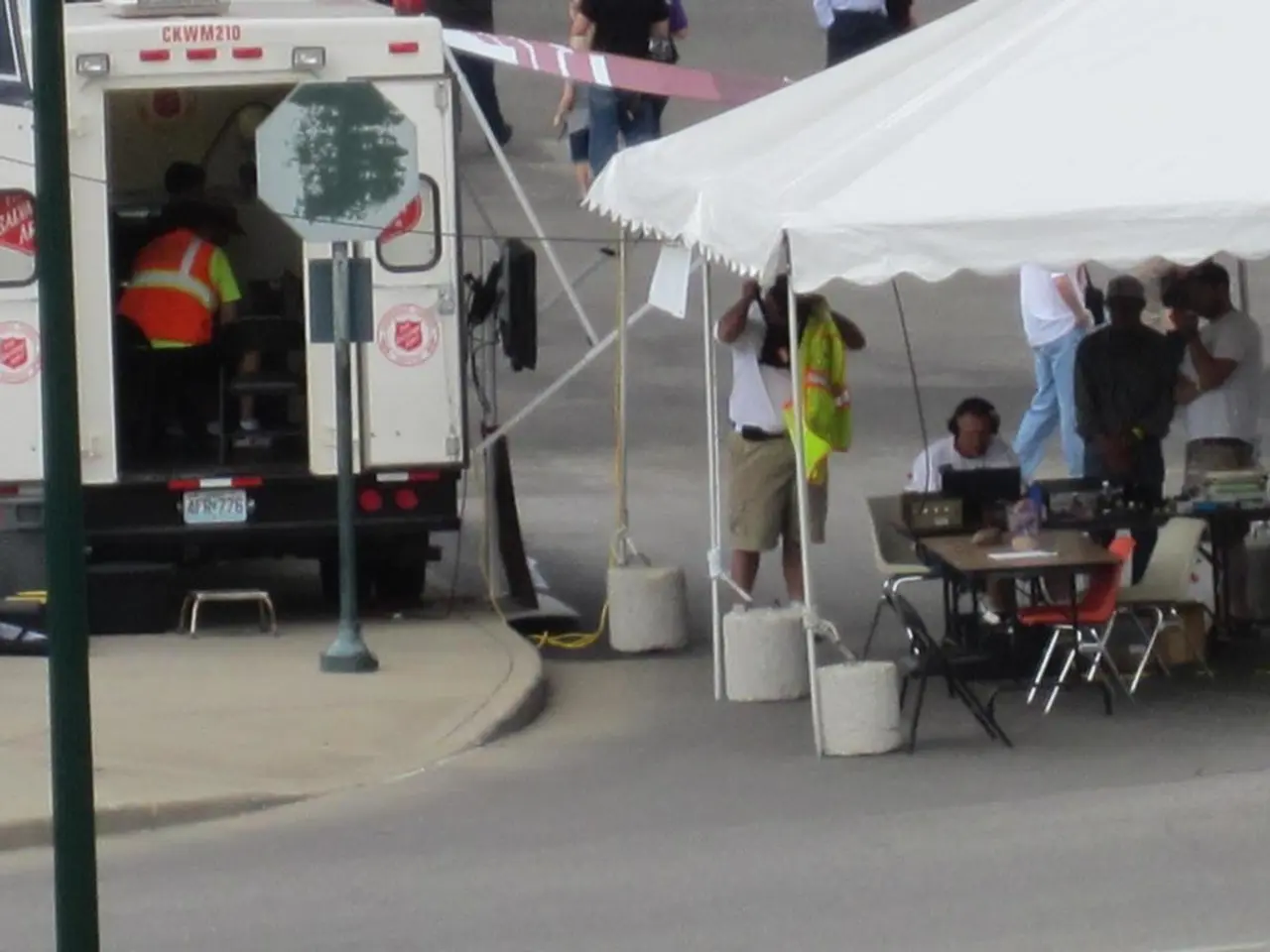Confirmed Deaths and Injuries Following Assaults in Ukraine and Russia - Casualties reported in assaults across Ukraine and Russia
In the ongoing conflict between Ukraine and Russia, both nations have employed drone technology in a series of tit-for-tat attacks. This article provides a comprehensive timeline of these incidents, highlighting the damages, casualties, and political implications.
**February 24, 2022 – Initial Russian Invasion of Ukraine**
Russia launched a full-scale invasion, including missile and aerial attacks on Ukrainian cities and infrastructure, causing significant casualties and damage across Ukraine[1]. By late 2022, Russia intensified missile strikes on Ukraine’s energy infrastructure, resulting in civilian casualties and widespread power outages[1].
**December 2022 – Ukrainian Drone Attacks on Russia**
Ukrainian drones attacked Russian air bases (Dyagilevo and Engels in western Russia), killing 10 people and heavily damaging two Tu-95 strategic bombers[1]. This marked one of the first major Ukrainian drone offensives deep into Russian territory.
**June 1, 2025 – Operation Spider’s Web**
Ukraine launched a sophisticated drone strike against five Russian air bases deep inside Russia, including Belaya Air Base in Eastern Siberia, using 117 drones flying low to evade radar[1][3]. Kyiv claimed destruction or damage of 40+ high-value Russian aircraft, including strategic bombers (Tu-95s, Tu-160s, Tu-22M3s) and an early-warning A-50 jet, amounting to roughly one-third of Russia’s long-range strike fleet and around $7 billion in equipment losses[1][3]. Western estimates were more conservative, with NATO suggesting 10-13 aircraft destroyed and 40 damaged. Russia acknowledged some attacks but downplayed losses and casualties[1][3]. The operation was unprecedented in scale and geographic reach, demonstrating Ukraine’s growing capacity for deep strikes and asymmetric warfare[3]. Politically, it undermined Russian military morale and showed Ukrainian resolve and innovation, especially as it occurred 4,300 km inside Russia.
**June 21–22, 2025 – Russian Drone and Missile Strikes on Ukraine**
In response or escalation, Russia launched coordinated attacks with missiles and approximately 47 Shahed drones targeting Ukrainian military and civilian infrastructure[4]. Ukraine reported downing many of these drones. Russia also used Iskander and other ballistic missiles from Western Russian regions[4]. These strikes aimed to disrupt Ukraine’s war effort and energy supply but caused civilian casualties and damage.
**July 2025 – Ukrainian Strikes on Russian Drone Production and Military Facilities**
Ukraine targeted Russian drone-related industrial infrastructure, including the Shahed drone manufacturing plant in Yelabuga and the Progress plant in Cheboksary, responsible for producing critical drone electronics and components[2]. Consecutive strikes caused large fires, forced airport closures in Kazan and Nizhnekamsk, and severely crippled Russian drone production and electronic warfare capabilities[2]. Another attack targeted a research institute near Moscow manufacturing thermobaric warheads for drones, reducing the lethality of Russian drone attacks[2]. Politically, these attacks reflected Ukraine’s strategy to degrade Russia’s drone warfare sustainability and signal resilience despite intensified Russian drone campaigns.
---
### Summary Table
| Date | Attacker | Target | Damages & Casualties | Political/Military Implications | |--------------------|----------|--------------------------------|---------------------------------------------------|--------------------------------------------------------------------| | Feb 24, 2022 | Russia | Ukrainian cities, infrastructure | Many casualties, infrastructure damage, power outages | Major invasion, air/missile strikes start large-scale war | | Dec 2022 | Ukraine | Dyagilevo & Engels air bases | 10 killed, 2 Tu-95 bombers heavily damaged | First deep Ukrainian drone strike inside Russia | | June 1, 2025 | Ukraine | 5 Russian air bases, incl. Belaya | Up to 40 aircraft destroyed/damaged, $7 billion losses | Massive deep strike, undermines Russian strike capability; morale hit | | June 21-22, 2025 | Russia | Ukrainian military/civilian targets | Ballistic missiles and ~47 drones launched, many shot down | Attempt to disrupt Ukraine’s defenses, increased drone warfare | | July 2025 | Ukraine | Russian drone factories & research institutes | Fires, factory shutdowns, airport closures | Significant blow to Russian drone production and electronic warfare |
This timeline reflects a tit-for-tat escalation in drone warfare, with Ukraine developing advanced capabilities for deep drone strikes to inflict strategic losses on Russian forces, while Russia continues to intensify missile and drone assaults on Ukraine. These developments have significant military and political ramifications, demonstrating the evolution of asymmetric warfare and the critical role of drone technology in the ongoing conflict[1][2][3][4].
Meanwhile, in domestic politics, Denys Shmyhal, the former prime minister, is expected to take over the post of defense minister[5]. Julia Swyrydenko was tasked to form a new government by President Volodymyr Zelenskyy on Monday, and the parliament in Kyiv is voting on her confirmation and that of her cabinet[6]. Rustem Umerov, the outgoing minister, is expected to become ambassador to the US[7]. Claims of both warring parties cannot be independently verified[8]. Ukraine is using long-range drones to defend against the Russian invasion and target Russian territory[9].
- The Commission has also taken a proactive stance to monitor the escalating drone warfare incidents between Ukraine and Russia, recognizing their potential implications for EU's general news, crime and justice, and politics.
- Despite the focus on war-and-conflicts, it's crucial to acknowledge that this tit-for-tat escalation between Ukraine and Russia has resulted in car-accidents and fires due to missile strikes, causing further casualties and damages.
- In the realm of Central and Eastern European relations, the EU is adamant about maintaining open dialogue with both Ukraine and Russia, advocating for a peaceful resolution to the ongoing conflict.
- As the political landscape in Ukraine evolves with leadership changes, the Commission remains vigilant to ensure ongoing stability in their external relations, with a focus on supporting democratic and peaceful transition.








